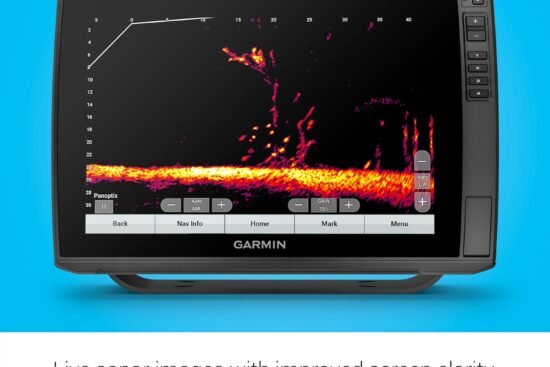
So you’re in the market for a new smartphone and you’re wondering which one is the best? Well, look no further because in this article, we will be discussing the top contenders for the title of the best smartphone currently available on the market. From impressive camera capabilities to lightning-fast processors, we’ll explore the features and specs that make each of these smartphones stand out from the crowd. By the end of this article, you’ll have a better idea of which smartphone might be the perfect fit for you.
Design
Materials and build quality
When it comes to the design of a smartphone, materials and build quality play a significant role in its overall appeal and durability. A well-designed phone not only looks premium, but it also feels sturdy and reliable in your hand. Premium materials like glass and metal are commonly used, providing a sleek and premium appearance. Additionally, a solid build quality ensures that the device can withstand everyday wear and tear.
Screen size and aspect ratio
The screen size and aspect ratio of a smartphone greatly affect the user experience. A larger screen offers a more immersive viewing experience, perfect for watching videos, gaming, and multitasking. On the other hand, a smaller screen size may be more compact and easier to handle with one hand. The aspect ratio also plays a role in the viewing experience, with a taller aspect ratio offering more screen real estate for scrolling and reading.
Bezels and notch design
Bezels and notch design have been hotly debated topics in recent years. Bezels refer to the borders around the display, and having smaller bezels allows for a higher screen-to-body ratio, maximizing the usable screen space. Notch design, on the other hand, refers to the cutout on the screen housing the front-facing camera and other sensors. Some users prefer a bezel-less design with no notch, while others may find the notch useful for accessing notifications or prefer a symmetrical look.
Display
Resolution and pixel density
The resolution and pixel density of a smartphone’s display greatly impact the clarity and sharpness of the visuals. A higher resolution, such as Full HD or Quad HD, provides more detail in images, videos, and text. Pixel density, measured in pixels per inch (PPI), determines how sharp the display appears. Higher PPI values result in crisper visuals, making it easier to read text and enjoy high-resolution media content.
Color accuracy and vibrancy
Color accuracy and vibrancy are essential for an immersive and visually satisfying experience. A smartphone with accurate color reproduction ensures that images and videos appear as intended, without any color distortion. On the other hand, some users prefer vibrant and punchy colors, which can enhance the viewing experience, especially when it comes to gaming and multimedia consumption.
Brightness and outdoor visibility
A bright display is crucial for outdoor visibility, allowing you to easily view content even in bright sunlight. A higher brightness level ensures that the display remains visible and legible in different lighting conditions. Additionally, features like auto-brightness adjustment can adapt the screen brightness based on ambient light, providing optimal visibility without straining the eyes.
Camera
Image quality and sharpness
Image quality and sharpness are paramount when it comes to smartphone cameras. The ability to capture detailed and sharp photos ensures that you can capture memories with clarity and precision. Cameras with higher megapixel counts, advanced image processing algorithms, and larger aperture sizes tend to produce sharper and more detailed images.
Low light photography
Low light photography is another crucial aspect of smartphone cameras. The ability to capture well-lit photos in low light conditions can be incredibly valuable, especially for evening or indoor photography. Features like Night mode, larger pixel sizes, and advanced image processing techniques contribute to improved low light photography capabilities.
Zoom capabilities and telephoto lens
Zoom capabilities determine the level of detail and clarity when capturing subjects from a distance. Smartphones with telephoto lenses allow for optical zoom, providing clearer images compared to digital zoom. Optical zoom is achieved by physically moving the lens elements to magnify the subject, resulting in sharp and detailed zoomed-in shots.
Wide-angle lens and landscape photography
Wide-angle lenses are ideal for capturing expansive landscapes and group shots. They allow you to fit more into the frame, providing a wider field of view. This is particularly useful in landscape photography or when photographing large groups of people. The inclusion of a wide-angle lens expands the creative possibilities and allows you to capture a broader perspective.
Performance
Processor and GPU
The processor and GPU (Graphics Processing Unit) determine the performance and speed of a smartphone. A powerful processor, paired with a capable GPU, ensures smooth and lag-free multitasking, gaming, and multimedia consumption. Processors with a higher number of cores and faster clock speeds can handle intensive tasks and demanding applications with ease.
RAM and storage capacity
RAM (Random Access Memory) and storage capacity are essential factors to consider when evaluating a smartphone’s performance. Sufficient RAM allows for seamless multitasking, preventing apps from reloading when switching between them. Larger storage capacity ensures that you have ample space to store your files, apps, and media without constantly running out of storage.
Operating system optimization
Operating system optimization plays a crucial role in the overall performance and efficiency of a smartphone. A well-optimized operating system ensures that the device runs smoothly, with minimal app crashes and slowdowns. Regular software updates from the manufacturer also contribute to improved stability and performance enhancements.
Battery
Capacity and endurance
Battery capacity determines how long a smartphone can run on a single charge. A higher capacity battery allows for longer usage time, ideal for heavy users or those who frequently travel. Battery endurance is also influenced by other factors like display brightness, processor efficiency, and usage habits. A smartphone with excellent battery endurance ensures that you won’t constantly be searching for a charging point.
Fast charging capability
Fast charging has become a sought-after feature in smartphones, allowing for quick top-ups when you’re in a hurry. With fast charging, you can significantly reduce the time it takes to charge your device. Different smartphone models offer various fast charging technologies, such as Qualcomm Quick Charge or USB Power Delivery, which can deliver a significant charge in a short time.
Operating System
User interface and customization
The user interface (UI) of a smartphone greatly influences the overall user experience. A clean and intuitive UI makes it easier to navigate through different menus and settings, while customization options allow users to personalize their device according to their preferences. Features like app drawers, gesture navigation, and theming capabilities all contribute to a user-friendly interface.
App ecosystem and compatibility
The availability and compatibility of apps are crucial for a smartphone’s usability. A robust app ecosystem ensures that you have access to a wide range of applications for productivity, entertainment, and everyday use. Compatibility with popular apps and services allows for seamless integration, ensuring that you can make the most of your smartphone’s capabilities.
Security and privacy features
Security and privacy are significant concerns for smartphone users, considering the amount of personal and sensitive information stored on these devices. Features like fingerprint sensors, facial recognition, and robust encryption contribute to enhanced security. Privacy features, such as app permissions and privacy controls, give users more control over their data and how it is shared.
Connectivity
5G support
With the advent of fifth-generation (5G) networks, the support for 5G connectivity in smartphones has become increasingly important. 5G promises faster download and upload speeds, lower latency, and improved network capacity. A smartphone with 5G support future-proofs your device, ensuring that you can take advantage of the latest network technology as it becomes more widely available.
Wi-Fi performance
Wi-Fi performance is crucial for seamless internet connectivity, especially when using data-intensive applications or streaming media content. A smartphone with strong Wi-Fi capabilities ensures stable and fast connections, reducing lag and buffering times. Features like dual-band Wi-Fi support and the latest Wi-Fi standards (such as Wi-Fi 6) enhance the overall Wi-Fi performance.
Bluetooth version and range
Bluetooth technology is essential for wireless connectivity to accessories like headphones, speakers, and smartwatches. The version of Bluetooth supported by a smartphone dictates the compatibility and range of connectivity. Bluetooth 5.0, for example, offers improved range, faster data transmission, and supports multiple devices simultaneously.
NFC capabilities
Near Field Communication (NFC) technology enables contactless communication between devices, allowing for services like mobile payments, data transfer, and access control. A smartphone with NFC capabilities turns your device into a digital wallet, making it convenient to make payments with just a tap. NFC also enables quick and easy pairing with other compatible devices.
Price and Value for Money
Pricing in comparison to competitors
When evaluating a smartphone’s value for money, it’s important to consider its pricing in comparison to its competitors. A higher price tag may be justified by superior features, build quality, or performance. However, there are often alternatives available at lower price points that offer similar functionality and performance, making them a more attractive option for budget-conscious buyers.
Included accessories and services
The inclusion of accessories and additional services can greatly contribute to a smartphone’s value for money. Accessories like headphones, cases, or fast chargers can enhance the overall user experience. Additionally, services like extended warranties or special subscriptions for cloud storage or streaming platforms can add value to the purchase.
Customer Satisfaction
Ratings and reviews
Customer ratings and reviews provide valuable insights into a smartphone’s performance, reliability, and user experience. Reading through user feedback from reputable sources can give you a better understanding of the device’s strengths and weaknesses. It’s important to consider a wide range of opinions and experiences to make an informed decision.
Brand loyalty and reputation
Brand loyalty and reputation can significantly influence purchasing decisions when it comes to smartphones. Established brands with a history of reliable and innovative devices often instill a sense of trust and assurance in consumers. However, new players in the market may offer unique features or competitive pricing that could be equally appealing to certain customers.
Conclusion
Choosing the best smartphone on the market involves considering various factors such as design, display, camera capabilities, performance, battery life, operating system, connectivity options, pricing, and customer satisfaction. It ultimately comes down to individual preferences and priorities. By evaluating each category and comparing different models, you can find a smartphone that meets your specific needs and delivers an exceptional user experience. Remember to consider the trade-offs between features, pricing, and overall value for money. Whether it’s a flagship device or a budget-friendly option, the best smartphone for you is the one that seamlessly integrates into your lifestyle and enhances your everyday tasks.




